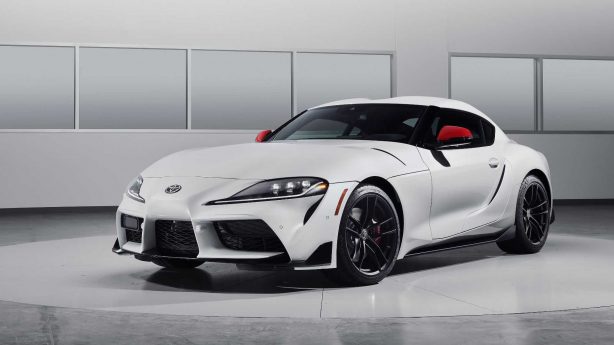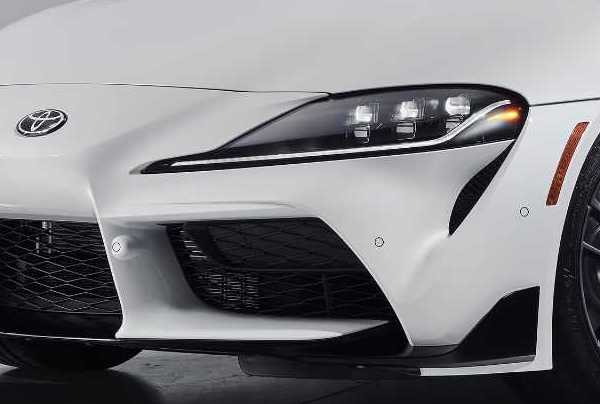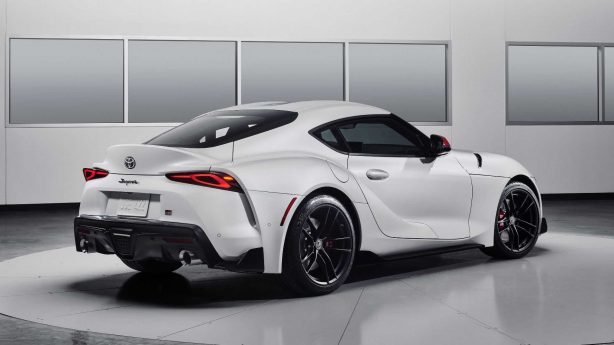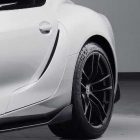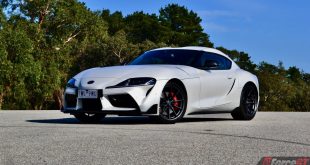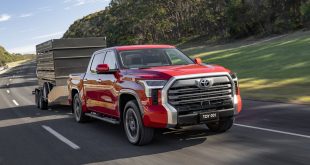The fourth-generation A80 Toyota Supra is well known around the tuning scene and is one of the reasons why it is so popular amongst car enthusiasts. Well, it seems Toyota is fully aware of this and has designed the all-new A90 Supra to be as tuner friendly as possible straight out of the box.
Speaking to US publication Motor Trend, chief engineer Tetsuya Tada said his team went to the trouble of making sure the new Supra can be easily modified to extract even more power and better handling with minimal effort.
Ready for boost
The sports coupé’s front fascia is designed with air intakes large enough to ensure modified examples get enough air if tuning companies decide to wind up the boost. Toyota then simply blocked off the excess intakes not required by the stock car and all the tuner needs to do is fit different grille inserts without the blanking, not an entirely new fascia.
Airflow to reduce lift
The additional airflow sucked in for the three engine radiators, the intercooler and transmission oil cooler requires an escape route or risks increasing lift. That’s where the blanking plates you see toward the rear of the bonnet come into play. Simply pop them out and replace with functional ones, and voila – improved airflow!
Cooling the brakes
Toyota has incorporated small teardrop-shaped air intakes directly below the headlights that are, once again, blanked out, as they aren’t needed by the stock car. Tuner can then easily swap them out for functional ones to cool the front brakes. It’s a similar story at the back where Toyota has integrated giant faux intakes in the doors which can be replaced with functional ones to cool the rear brakes.
Toyota even went to the trouble of conducting wind-tunnel tests with all these potential vents opened and closed to ensure the Supra’s aerodynamic integrity isn’t compromised.
Cooling the limited-slip differential
With additional power means additional cooling for the limited-slip differential. Toyota’s designers have ensured they leave room for a heat-exchanger and plumbing lines, and even provided a mounting location for all of it.
Mounts for rear wing
Those wanting to install an A80 style rear wing will be pleased to know the Supra’s decklid incorporates reinforcements under the composite skin to ensure the forces produced by the wing are transferred safely through the bodywork.
Strut-tower bracing
The Supra comes with pre-tapped holes in the strut towers and radiator supports so strut-tower bracing can be easily fitted. The air-intake box on the passenger side even has relieve molded into it so the brace doesn’t need to bend up and over for clearance. How thoughtful!
As you can see, Toyota’s team of engineers has thought of everything to make it as easy and cost effective as possible to make the Supra go faster and handle better.
However, what Tada’s team did not prepare for is aggressive lowering, as the Supra already has a very low centre of gravity to start with (lower than the flat-four-equipped Toyota 86). Further lowering it risks positioning the various sensors on the car to low to work properly.
So, there you go. Won over by the A90 Supra yet?
 ForceGT.com Car News, Car Reviews, Video Reviews, Tuning and much more.
ForceGT.com Car News, Car Reviews, Video Reviews, Tuning and much more. 